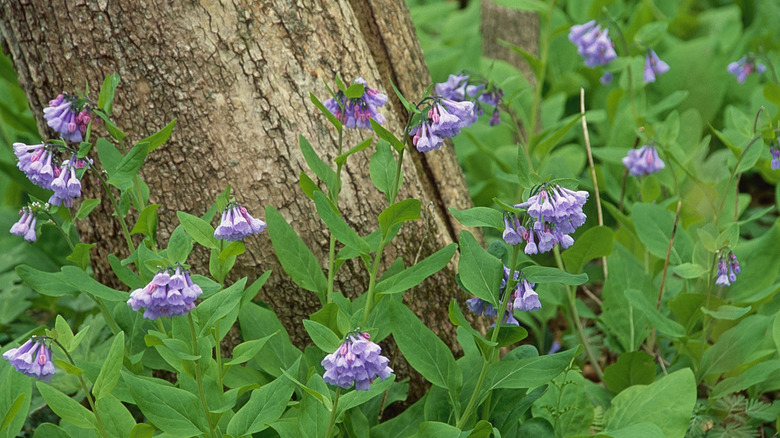The Trumpet-Shaped Perennial To Plant In The Fall For Beautiful Spring Blooms
Preparing for the future is good practice, but typically, this refers to financial planning and emergency readiness. For now, set anxiety-inducing preparations aside and anticipate something sure to bring you joy: spring blooms. Fall is prime time for tucking rhizomes into your flower beds, and if you want to experience the arrival of Virginia bluebells (Mertensia virginica) in early spring, you may be donning your gardening gloves this weekend to make it happen. Virginia bluebells grow from rhizomes that benefit from a winter's rest in cool soil. Come early spring in USDA Hardiness Zones 3 to 8, these delicate cornflower-blue florets are among the first flowers to treat both your snow-weary eyes and hungry pollinators.
Virginia bluebells are some of the best spring flowers to plant in the fall, since they need to spend a few months in the ground to establish roots and get ready for their spring show. These woodland flowers are considered ephemeral perennials, as they bloom for a particularly short period in spring. Not only are the floral sprays lovely, Virginia bluebells' foliage also sets itself apart by starting out purple-tinted. True to the definition of ephemeral, the leaves quickly turn green before the flowers open to kickstart a stunning spring garden.
How to plant Virginia bluebell rhizomes in the fall
As you'd expect from their eastern woodland origins, Virginia bluebells will be happier in part to full shade and damp soil. Scope out a spot in your yard that meets these criteria. In the wild, Virginia bluebells often pop up next to streams and floodplains, so a low-lying patch of earth that tends to hold moisture is a good option for planting the rhizomes. If you're limited to sunnier spots, the flowers will need more frequent watering. Also, if you have a black walnut tree in your yard, here's an opportunity: Virginia bluebells are one of the only plants that will grow in the soil around it.
To enjoy its unique colors in a few months, plant each Virginia bluebell rhizome 1 inch under the soil. Each plant grows up to 2½ feet tall and 1 foot wide, so space each rhizome about 1 to 1½ feet apart. Give the area a generous watering, and when late winter or early spring arrives, hopefully your Virginia bluebells will help you celebrate the new season. Their flowers should last about three weeks before going dormant for the summer, and they bloom unbothered by both deer and rabbits.

